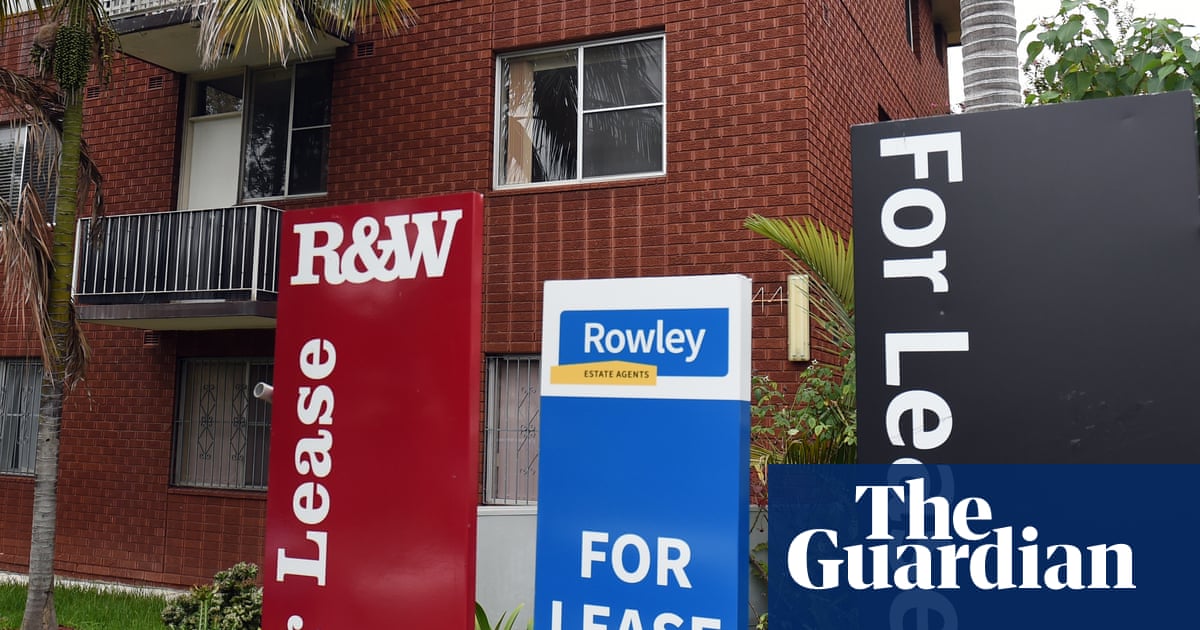Footage of long queues at the doors ofproperties for leasehas become a regular feature of property reporting over the past few years.
Landlords have upped their asking rents by double digits. Ahead of last weekend’s election, the Greens campaigned hard for rent freezes to stop the “unlimited rent increases” they claimed the major parties tacitly supported.
There have been horror stories of single parents struggling to find an affordable home, while a lack of housing plagues residents indisaster-stricken towns such as Lismore.
Yet the rental crisis is not what you think it is.
That’s because for the vast majority of renting households, it’s not a crisis at all.
Ben Phillips, an associate professor at the Australian National University Centre for Social Research and Methods, says talk of a national rental crisis is “overblown”.
Phillips says much of the media attention has been focused on the rapid rise in advertised rents, which peaked at well over 15% in 2024, according to property research firm CoreLogic.
That’s the fastest annual rate on record, according to this data stretching back about two decades.
And since the end of 2019, this measure of rents has climbed by nearly 50%.
But Phillips, a member of the Albanese government’s economic inclusion advisory committee, which has advocated for a major lift in the jobseeker payment, says these online advertised rents are only a small and unrepresentative share of the total rental market.
They reflect how difficult and pricey it is to move rentals, or rent for the first time. What they don’t reflect is how much most of the roughly 3 million households with a lease are actually paying.
And there, the picture is very different.
The most comprehensive database on rents paid is produced by the Australian Bureau of Statistics as part of its consumer price index (or CPI, which measures inflation) series.
The ABS each month tracks rental rates for about 600,000 properties, or nearly one in three leased homes.
And by this measure, rents have climbed by 19% in just over five years - or less than half the CoreLogic reported rate.
That’s not nothing, but it is two percentage points less than the overall increase in the CPI over that same period. In other words, rents have been a drag on overall inflation.
Michael Fotheringham, the managing director of the AustralianHousingand Urban Research Institute, says Phillips’ analysis is right.
The Corelogic rental data “show a more inflamed market than ABS data, and that’s because a significant proportion of renters are in a stable situation”, Fotheringham says.
“They have been in that property for more than a year, and have a landlord who is not looking to jack up rents whenever they can,” he says.
On the other hand, there are also renters who are struggling to find a property at a time when the national vacancy rate is at a record low of 1% – as it has been for the past two years – against a more typical rate of 2.5%.
“They are both correct [the two sets of data] but they are talking about different things.”
That said, Fotheringham says, there is a “fundamental problem with the word ‘crisis’”.
The problems in the housing market have not appeared suddenly, like a natural disaster, he says, and an emergency response is not the way to fix the problems that ail the housing market.
“We have a badly broken housing system that we have been sleepwalking into for 40 years. We need long, slow, multifaceted programs. It’s taken decades to get us into this mess, and it won’t be fixed by Christmas.”
Phillips, in the unreleased research paper Australian Rental Cost Trends, says the confusion over how much rental prices have increased boils down to the difference between the “stock” of properties versus the “flow” of properties.
“Economists often make this distinction using a bath tub analogy,” he writes.
“A smallflowof hot water (new rent data) makes little difference to a much colder and largerstockof water in the bath (all rents in the market).”
Averages can hidea multitude of sins, but Phillips says the Albanese government’s boosts to rental assistance and parenting payments have helped cushion the impact of higher rents on lower income households.
“There are people who are struggling, but the talk of a generalised rental crisis is overblown,” he says.
Phillips’ analysis shows that rental affordability has actually improved over the past decade, with renters’ incomes rising faster than rents.
Despite a recent uptick, he estimates that rental costs as a share of renters’ incomes have dropped “fairly substantially” from 28% in 2013 to 26% now.
Similarly, a little over one in five renting adults in 2023 reported at least three forms offinancial stress– a threshold for severe pressure, according to the latest Hilda survey.
That’s a lot, but it’s not much changed from the recent low of one in six in 2021, and it’s about the same as the 15-year average.
